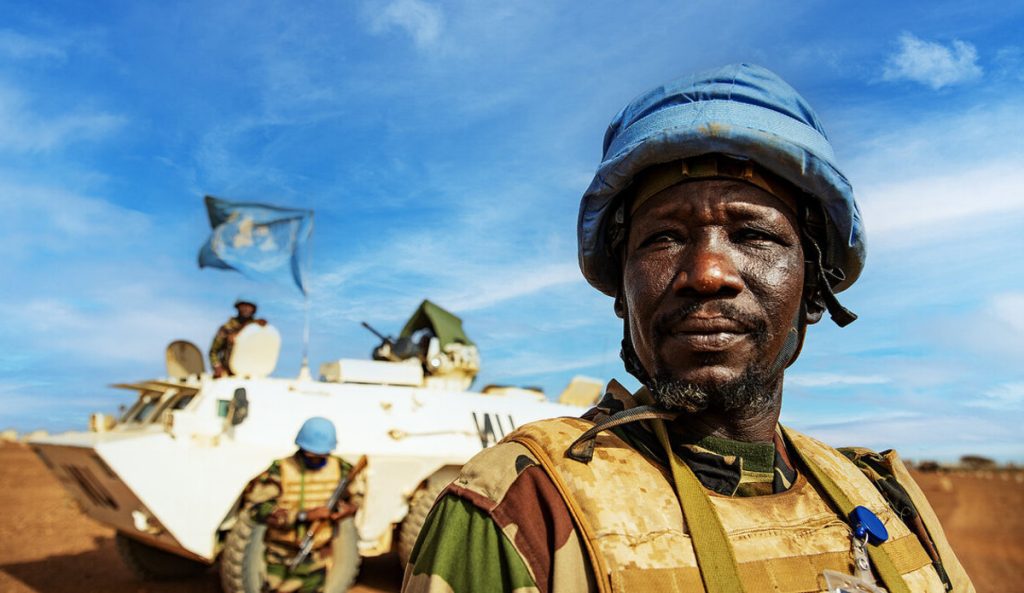In the tapestry of modern diplomacy and conflict resolution, UN Peacekeeping stands out as a vital thread, weaving together the aspirations of a world yearning for peace. Established in the aftermath of World War II, this global endeavor has since evolved into a cornerstone of international efforts to foster stability and rebuild societies torn apart by conflict. With the International Day of United Nations Peacekeepers celebrated on May 29, we're reminded of the sacrifices and achievements of those who don the blue helmet. From the deserts of the Middle East to the jungles of Africa, peacekeepers have faced down dangers to protect the vulnerable and uphold the values of peace and security. Yet, as we honor their commitment, we also confront the evolving challenges they face in an increasingly complex world. With over a hundred missions under its belt, UN Peacekeeping has adapted to new threats, including terrorism and organized crime, proving its resilience and enduring importance. This day is not just about reflection; it's a call to action, a reminder of the ongoing struggle for peace, and a tribute to the brave souls who have laid down their lives in its pursuit.
Key Takeaway
Timeline
Day Activities
-
Morning Reflections: Kick off the day with a solemn moment of silence. Participants across the globe pause to honor fallen heroes who've made the ultimate sacrifice for peace. This act of remembrance connects communities, reminding everyone of the steep price paid for the tranquility enjoyed by many today.
-
Interactive Workshops: Midday activities shift gears, focusing on educational workshops. Here, folks dive into the nuts and bolts of peacekeeping operations. Through engaging discussions and hands-on activities, attendees get a real feel for the challenges peacekeepers face and the strategies they employ to navigate complex conflict zones.
-
Evening Celebrations: As the sun sets, the tone lightens with cultural performances and storytelling sessions. These events celebrate the rich diversity and resilience of peacekeeping forces and the communities they serve. It's a time for sharing stories of hope, courage, and the unyielding pursuit of peace, drawing the day to a close on a note of solidarity and optimism.
Interesting Facts
1. Establishment Year
In 2002, the UN General Assembly kick-started this annual tribute.
2. First Mission
The 1948 Middle East operation was the debut UN peacekeeping mission.
3. Mission Count
Over 100 peacekeeping missions have been deployed globally.
4. Key Objectives
Peacekeepers aim to protect civilians, deliver aid, and support peace.
5. Evolving Challenges
Today's peacekeepers tackle terrorism, crime, and civilian protection in conflict zones.
Why We Love This Day
-
Honoring Brave Souls
Let's face it, not everyone has the guts to stand in the line of fire for peace. On May 29, we tip our hats to the courageous men and women who've served in UN peacekeeping missions. These folks have left their families behind, faced unknown dangers, and sometimes paid the ultimate price, all in the name of keeping the peace. Their bravery and sacrifices are nothing short of heroic, making this day a powerful reminder of the cost of peace. -
Celebrating Global Unity
There's something pretty special about May 29. It's not just any day; it's when we celebrate international cooperation and unity. Peacekeeping missions are a testament to what can be achieved when countries come together for a common goal. From the deserts of the Middle East to the jungles of Africa, peacekeepers from all corners of the globe work side by side. This day shines a spotlight on the spirit of global solidarity, showing us that, despite our differences, we can work together for a safer world. -
Reflecting on Progress and Challenges
Alright, let's not sugarcoat it; peacekeeping is tough business. But, May 29 gives us a chance to look back at the strides we've made towards maintaining international peace and security. It's also a day to acknowledge the hurdles that still lie ahead. With new threats popping up and conflict dynamics changing, peacekeepers have to constantly adapt. This day is about recognizing both the achievements and the ongoing challenges in peacekeeping, reminding us of the work that still needs to be done to ensure a peaceful future for all.
Past & Future Dates
| Month | Day | Year |
|---|---|---|
| MAY | 29 | 2022 |
| MAY | 29 | 2023 |
| MAY | 29 | 2024 |
| MAY | 29 | 2025 |
| MAY | 29 | 2026 |
| MAY | 29 | 2027 |
| MAY | 29 | 2028 |
FAQ
What is the primary purpose of the International Day of UN Peacekeepers?
The International Day pays tribute to the service and sacrifice of peacekeepers and the resilience of the communities that they serve.
What is the theme of the International Day of the United Nations peacekeepers 2025?
The theme of the 2025 International Day of the UN Peacekeeping hasn't been announced yet. Typically, the United Nations unveils the theme closer to the date, spotlighting relevant issues for peacekeeping missions and goals.
Which international day is celebrated on 29th May?
International Day of UN Peacekeepers.
What is the theme of the 75 UN Peacekeepers Day?
For the 75th UN Peacekeepers Day, the world honors the courage and dedication of peacekeepers with the theme, "Fit for the Future: Building Better Together." This recognizes both the past contributions and the evolving challenges peacekeeping faces.
